Istanbul is one of the world’s most well-connected cities, offering extensive flight accessibility from global and domestic locations. Istanbul Airport (IST) serves as Turkish Airlines’ central hub, providing direct flights to over 300 destinations across Europe, Asia, the Americas, Africa, and the Middle East. Major airlines worldwide operate frequent flights to IST, making it a key transit hub for international travellers. Although smaller, Sabiha Gökçen Airport (SAW) also offers strong connectivity, particularly within Europe, the Middle East, and Asia, and is a hub for Pegasus Airlines, a popular low-cost carrier. Domestically, both airports provide frequent flights to all major Turkish cities, including Ankara, Izmir, Antalya, and regional destinations like Trabzon and Gaziantep.
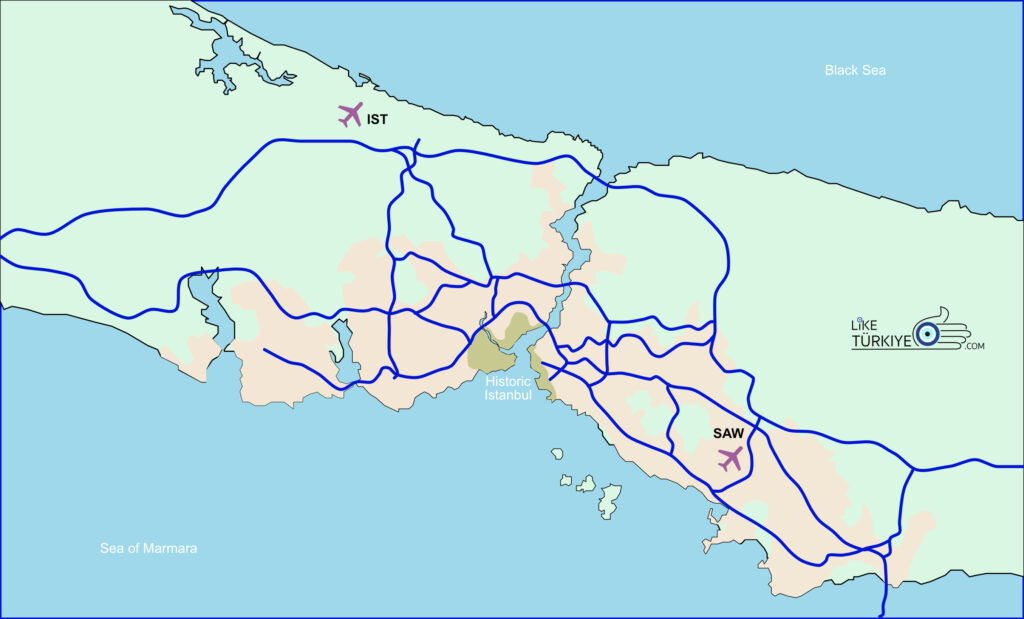
Both airports offer multiple transportation options to reach central Istanbul and its key attractions. From Istanbul Airport (IST), the M11 metro line connects passengers to the city’s metro network, while Havaist and IETT buses provide direct links to historic districts like Taksim, Sultanahmet, and Kadıköy. Taxis and private transfers are also readily available. From Sabiha Gökçen Airport (SAW), the M4 metro line connects directly to Kadıköy, with transfers available to other parts of the city. Havabus shuttles and municipal buses link SAW to Taksim, Kadıköy, and major transport hubs. While IST is closer to the European side’s historical and business districts, SAW is more convenient for those staying on the Asian side or travelling to destinations like Bursa. Both airports provide efficient access to Istanbul’s world-famous landmarks, including the Hagia Sophia, Grand Bazaar, and Bosphorus, making them well-integrated into the city’s transport network.
Comparison of the two major airports:
| Features | Istanbul Airport (IST) | Sabiha Gökçen Airport (SAW) |
|---|---|---|
| Location | Arnavutköy, European Side | Pendik, Asian Side |
| Distance to Taksim Square | 35 km | 32 km |
| Internal Area | 1.4 million square metres | 0.32 million square metres |
| Passengers (2024) | 80 million | 41 million |
| Owner | İGA (Istanbul Grand Airport) | Malaysia Airports Holdings Berhad |
| Airline Hub | Turkish Airlines | Pegasus |
| Opened | 2019 | 2001 |
| Runways | 4 (+2 planned) | 2 |
| Check-in Counters | 500+ | 112 |
| Food Outlets | 150+ | 50+ |
| Car Parking | 40,000+ | 4,718 |
| Direct Metro Line | M11 to Gayrettepe | M4 to Kadıköy |
| Best For | Long-haul & global connections | Budget airlines & regional flights |
Istanbul Airports – Table of Contents
Istanbul Airport (IST)
Location: Tayakadın, Terminal Caddesi No:1, 34283 Arnavutköy/İstanbul – Website: Istanbul Airport Official English Website
Opened in 2018 and fully operational since April 2019, Istanbul Airport (IST) replaced Atatürk Airport as the city’s main international gateway. It is managed by İGA (Istanbul Grand Airport) under a 25-year operating lease. Spanning approximately 76.5 million square meters, it is one of the world’s largest airports, with 143 boarding bridges and over 500 check-in counters. In 2023, Istanbul Airport (IST) handled around 76 million passengers, making it one of the busiest airports in Europe. It is the primary hub for Turkish Airlines, which operates most flights. Istanbul Airport’s busiest international routes include London, Dubai, Moscow, Frankfurt, and Paris, while its top domestic destinations are Ankara, Izmir, Antalya, and Trabzon.
Multiple transport options facilitate access to Istanbul Airport (IST). The M11 metro line connects the airport to central Istanbul, with further extensions planned. Havaist and IETT buses operate frequent routes to districts like Taksim, Sultanahmet, Kadıköy, and Levent, while taxis and private transfers offer direct travel. Istanbul Airport (IST) also has extensive car rental services and parking facilities. Despite its distance from the city centre (35 km from Taksim), the modern infrastructure and well-organised transport links make reaching the airport relatively smooth.
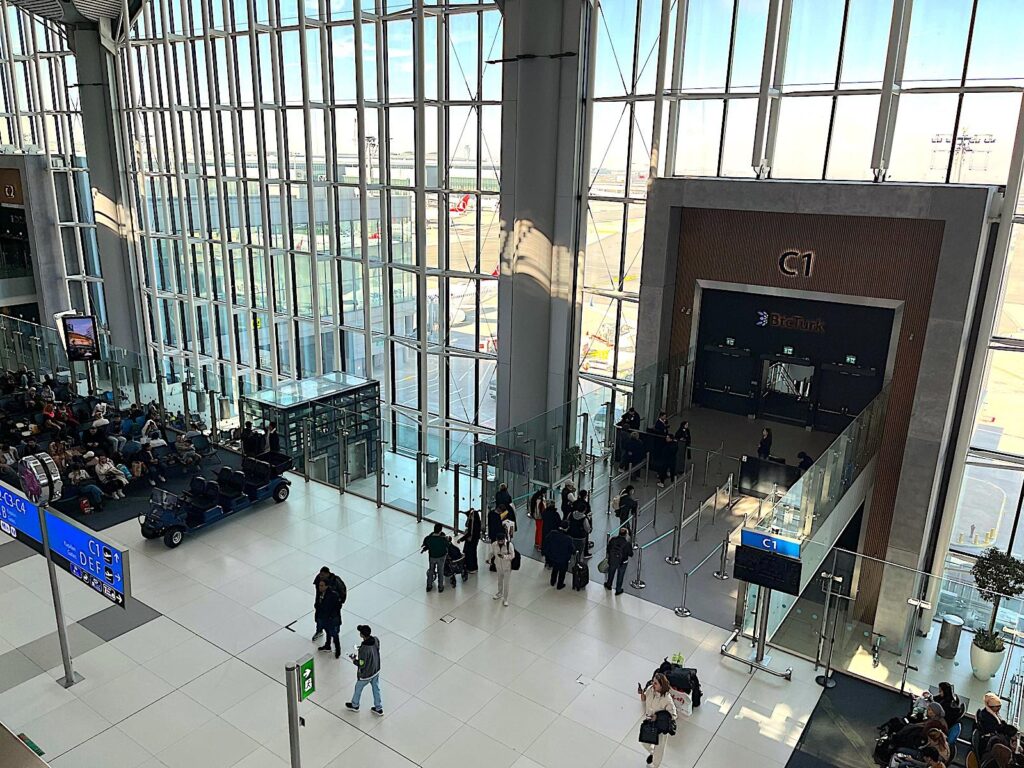
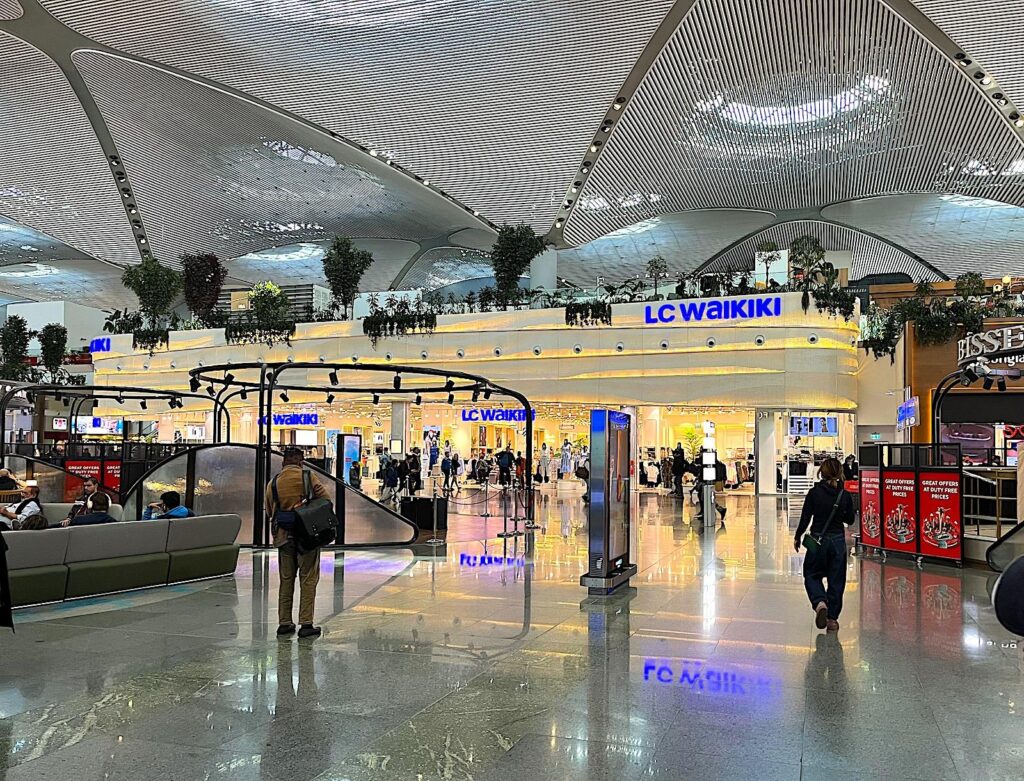

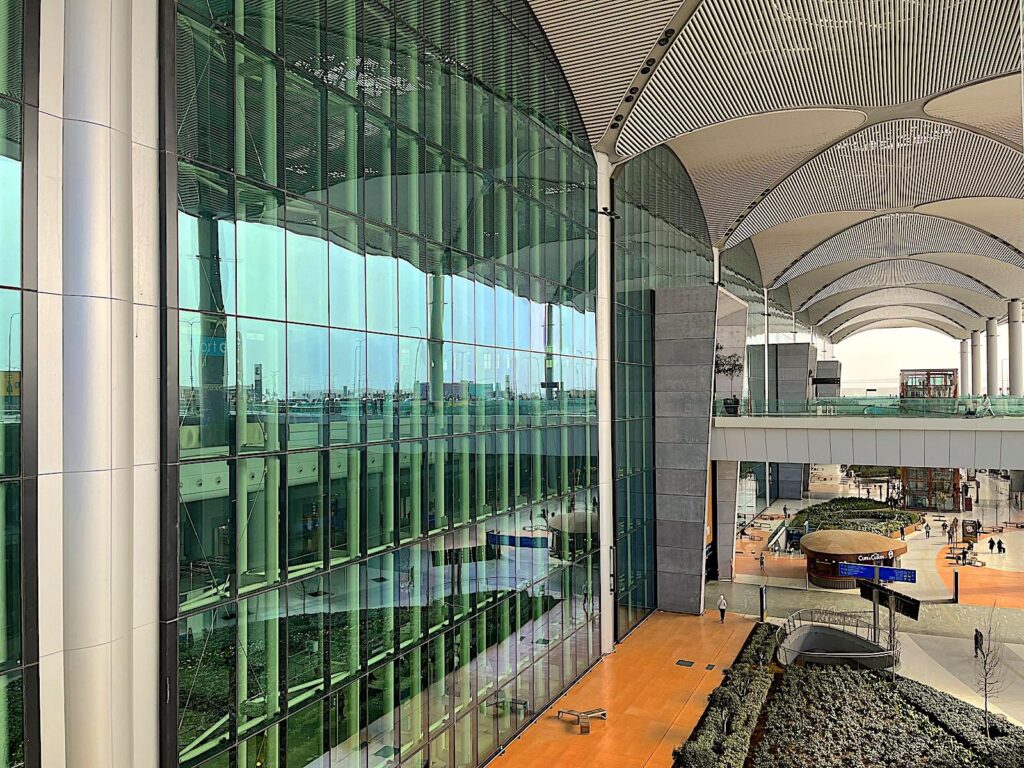
For more details on Istanbul Airport, including information and tips on arrival and departure and details on airport transportation services, please see the dedicated page: LikeTurkiye.com – Istanbul Airport (IST)
Sabiha Gökçen Airport (SAW)
Location: İstanbul Sabiha Gökçen uluslararası Havalimanı, Sanayi, 34906 Pendik/İstanbul – Website: Sabiha Gökçen Official Airport English Website
Opened in 2001, Sabiha Gökçen Airport (SAW) is Istanbul’s second-largest airport and is located on the Asian side in the Pendik district. It is named after Sabiha Gökçen, the world’s first female fighter pilot, and is managed by Malaysia Airports Holdings Berhad (MAHB). Covering 655,000 square meters, it has a single terminal with 112 check-in counters and two runways, one newly opened in 2023 to improve capacity. Sabiha Gökçen Airport (SAW) handled approximately 36 million passengers in 2023, which made it one of the busiest single-runway airports in the world. The airport is a central hub for Pegasus Airlines, with Turkish Airlines and AnadoluJet also operating significant routes. The busiest international destinations include Dubai, London, Frankfurt, and Baku, while Izmir, Antalya, and Ankara are the top domestic routes.
Sabiha Gökçen Airport (SAW) is located 32 km from Taksim. It is well-connected to the city via the M4 Kadıköy–Sabiha Gökçen metro line, which provides direct metro access to the Asian side. Havabus and IETT buses run frequent services to Kadıköy, Taksim, and surrounding areas. Taxis and private transfer options are also available. It can be a convenient alternative to Istanbul Airport (IST), especially for travellers heading to the Asian side, Bursa, or Yalova. While smaller than Istanbul Airport (IST), its expansion projects, including a second terminal under construction, are set to increase its capacity and efficiency further.
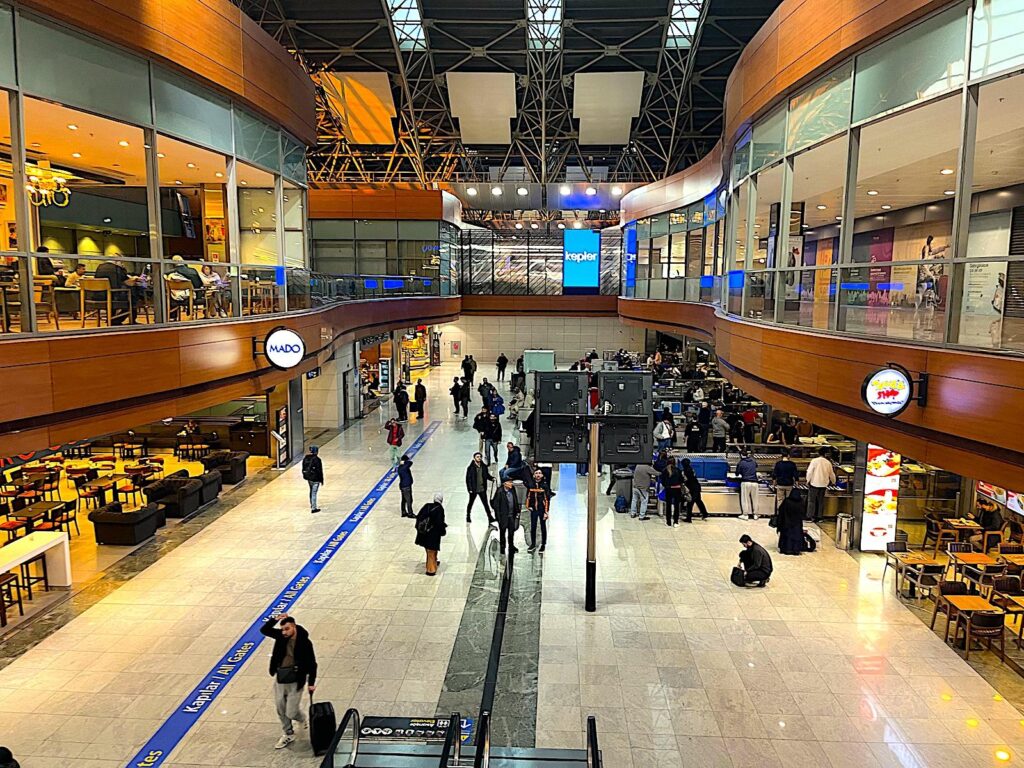
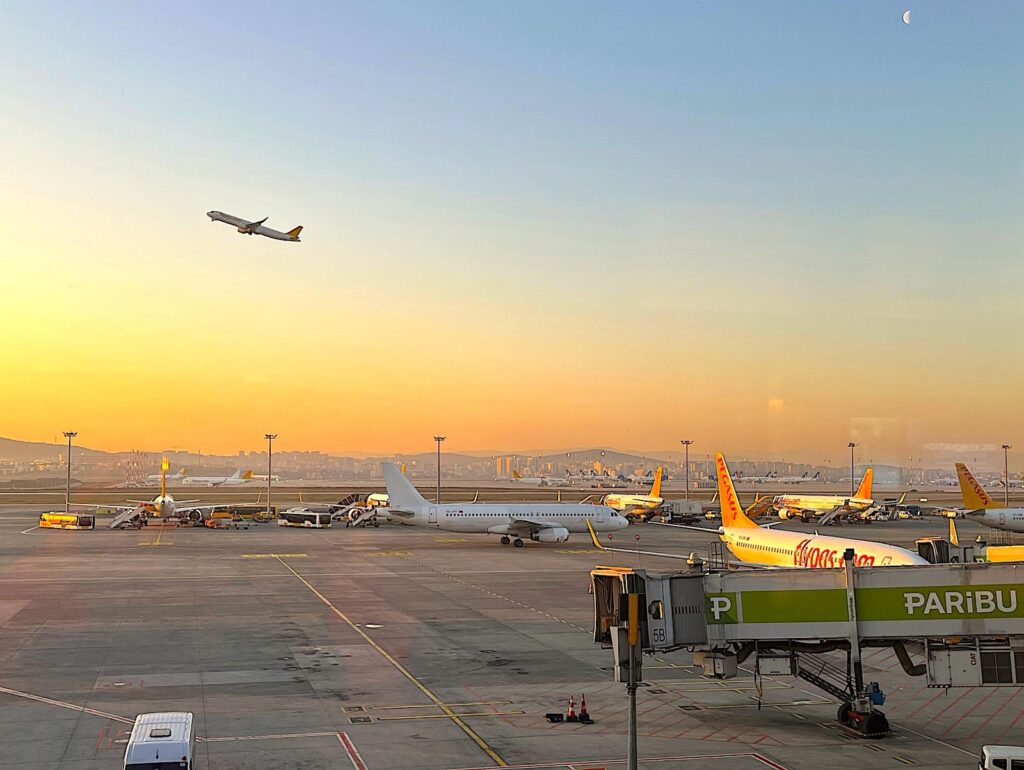

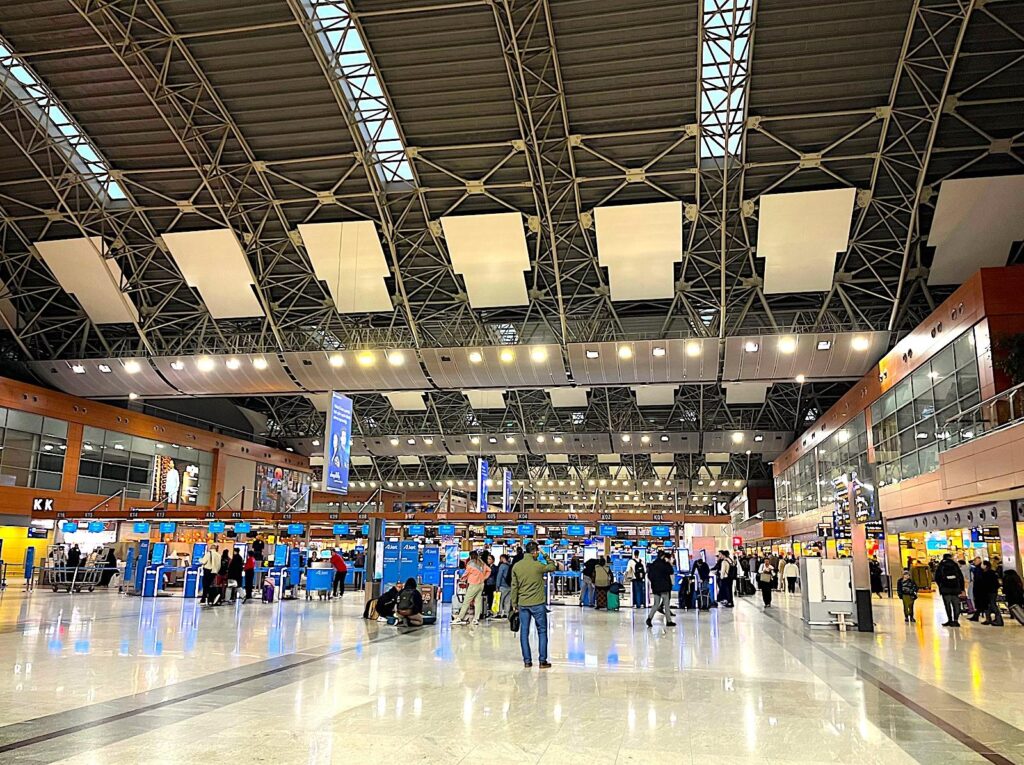
For more details on Sabiha Gökçen Airport (SAW), including information and tips on arrival and departure and details on airport transportation services, please see the dedicated page: LikeTurkiye.com – Sabiha Gökçen Airport (SAW)
Atatürk Airport (closed to commercial flights)
Atatürk Airport, once Istanbul’s primary international airport, officially ceased commercial passenger operations on April 6, 2019, when Istanbul Airport (IST) entirely took over its role. However, the airport has not been entirely shut down. It still serves limited functions, mainly cargo flights, government and VIP aircraft, and maintenance operations. Turkish Airlines and other carriers moved all their passenger services to Istanbul Airport (IST), but Atatürk continues to be used for state visits, military aviation, and emergency landings. Additionally, aircraft maintenance and storage facilities utilise a portion of its infrastructure, ensuring it remains relevant to the aviation industry.
In recent years, Atatürk Airport has also been repurposed for non-aviation functions. The Turkish government has transformed part of the site into a national park and public space, known as the “Atatürk Airport National Garden”, one of the largest green areas in Istanbul. Some airport buildings have been adapted for exhibitions, trade fairs, and disaster relief operations, including serving as a logistics hub during emergencies such as earthquakes. Despite no longer being a hub for commercial flights, its strategic location near central Istanbul remains an essential site for specialised aviation and public use.
